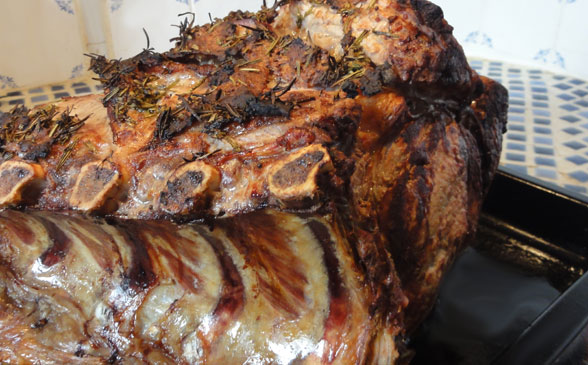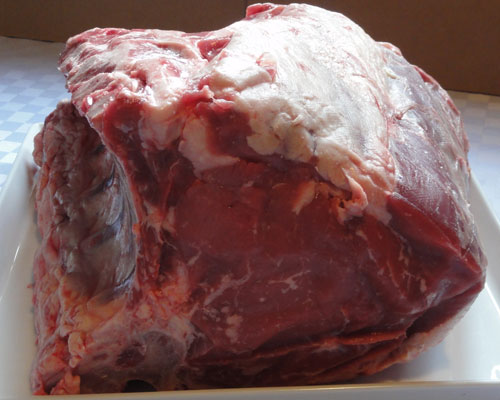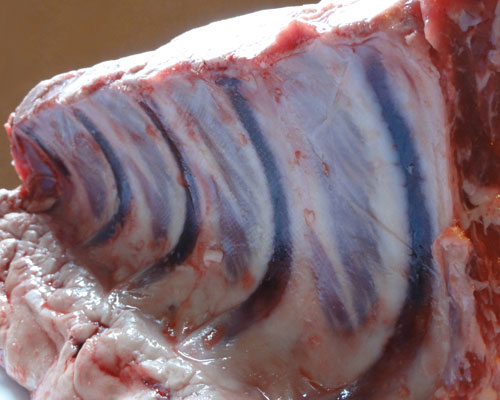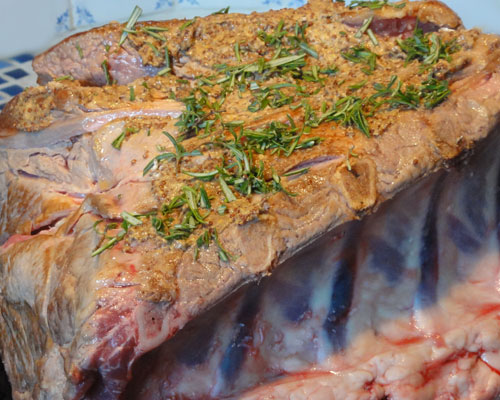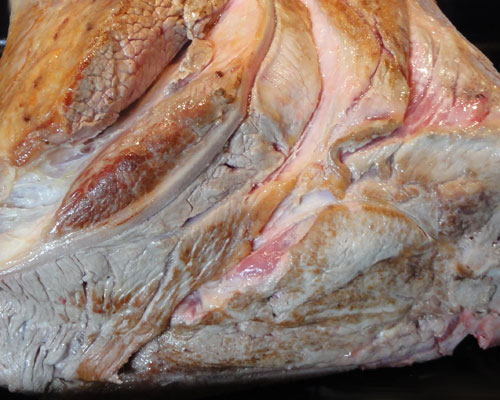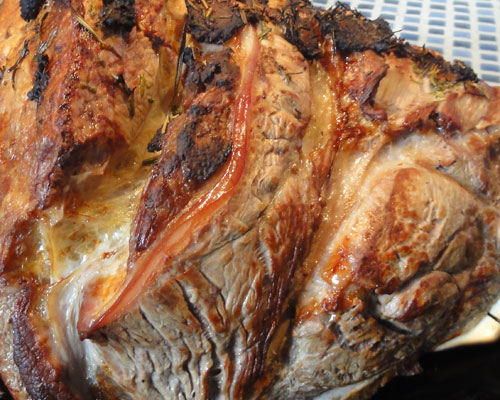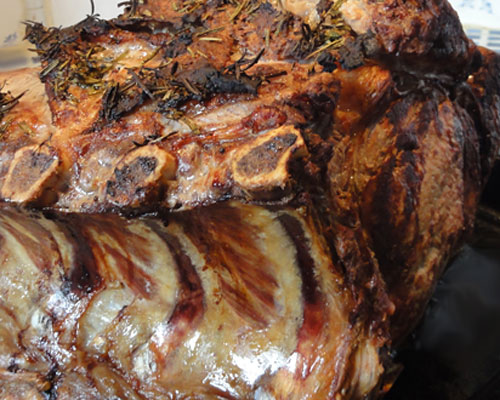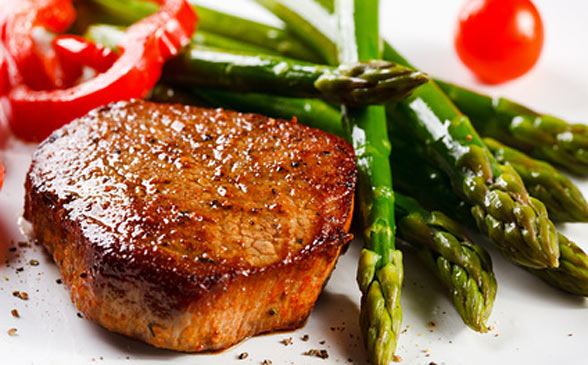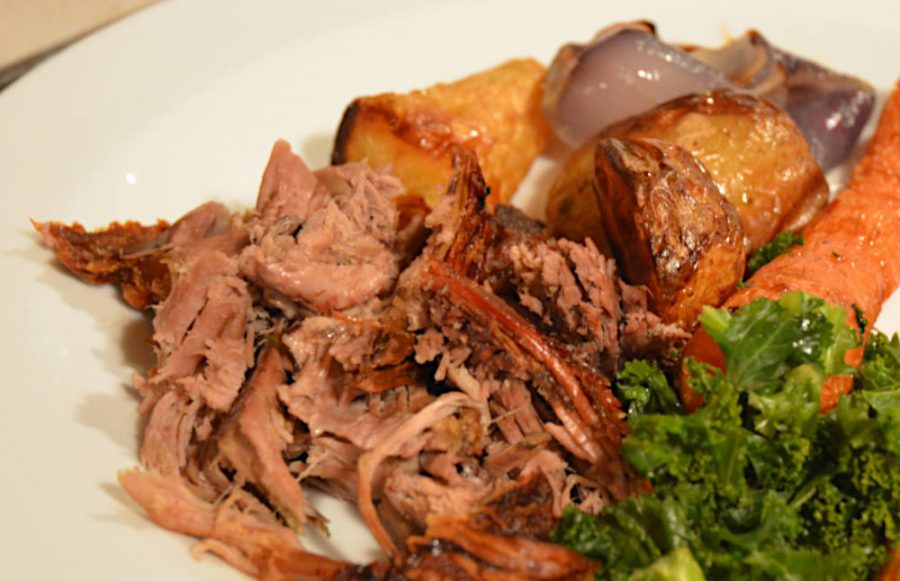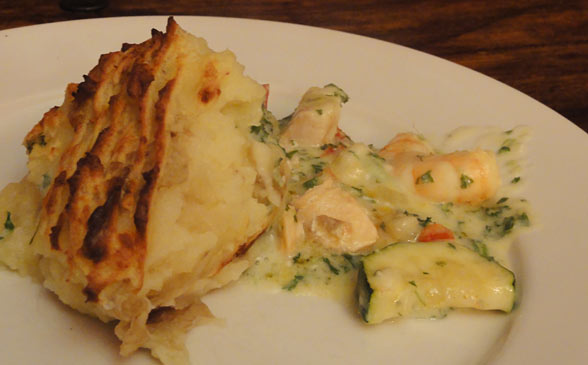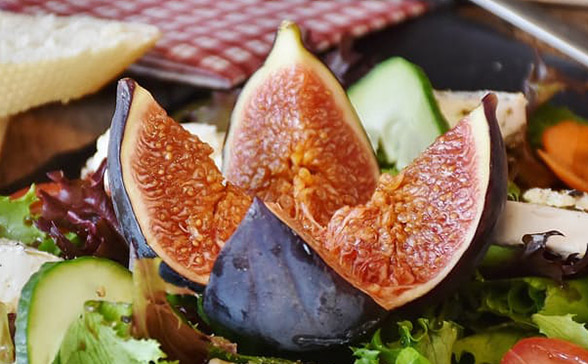This ultimate beef rib roast is sure to impress your guests and is ideal for large family get-togethers, special occasions or an alternative to the Christmas Turkey. The very special joint draws extra flavour from the bones as it cooks and the cooking aromas are divine!
The recipe below is based on our 8.5 kg joint that we cooked so vary your cooking times and quantities depending on the size of your own joint.
Ingredients
- 8.5 kg Rib of Beef (5 rib joint or similar)
- 4 sprigs Rosemary – removed from the stem and coarsely chopped
- 3 tbsp Olive Oil
- 25 g Wholegrain Mustard
- 10 g Plain flour
- Good dash Modena Vinegar
- 10 Garlic Cloves – peeled and very lightly crushed (optional)
General Guide to Cooking Time
- Brown the sides in a large frying pan – approx 5 minutes
- Cook initially for 40 minutes at 240 degrees c.
- 3 hours 30 minutes at 190 degrees (30 minutes per kg plus 15 minutes extra for rare, 30 minutes extra for medium cooking)
- 50 minutes at 240 degrees (when roast potatoes went in the oven)
- Resting time after cooking – 20 to 30 minutes covered loosely with foil
- Total cooking time in a circa fan oven – 5 hours – produced a “well done” joint
Method
- Take the meat joint out of the fridge 30 minutes before cooking to bring to room temperature
- Remove packaging just before searing
- Pre-heat your oven to 240 degrees centigrade
- (Optional as this can be difficult!) – Heat 2 tbsp olive oil in a large frying pan and brown the meat on three sides (not the bottom where the bone sits). Use large forks to hold and turn the joint as the meat will get hot. The joint will be very heavy so take care not to overstretch and hurt yourself! Also use clean heat protective gloves
- Whilst the meat is cooking, chop the rosemary
- Mix the mustard, Modena vinegar and flour together in a small bowl
- Place the meat in a large ovenproof dish or roasting tin
- Spread the remaining olive oil onto the top of the meat with the fat to the top
- Spread the mustard mixture over the top of the meat particularly in areas that protrude
- Sprinkle on the chopped Rosemary
- If adding garlic, make 10 incisions on the top of the joint approx 13 mm deep and insert the cloves
- Cook for 40 minutes at 240 degrees c
- Remove from the oven and baste the joint with the meat juices in the dish
- Baste every 30 minutes. If any areas start to burn, wrap a little foil around that part only
- If cooking roast potatoes in the same oven, roll the potatoes in the fat and they can be cooked around the meat. Move them into a separate tin or ovenproof dish after 30 minutes as they will be too fatty if left in the dish with the meat
- Once the the meat is cooked, remove from the oven and leave to rest for 30 minutes, covered loosely with foil
- When ready to server, slice the meat with an electric knife or carving knife. Cut close to the bone and slice as you would a boneless joint. Re-arrange around the bone for serving
- Serve with roast potatoes and vegetables of your choice and peppered gravy
Equipment
- Large Oven Proof Dish
- Kitchen Foil (silver foil)
- Large non-stick frying pan
- Two large meat forks or similar for turning in the pan
- Large serving dish
Top Tips
- Cook the meat on the bone as this imparts extra flavour and acts as a heat conductor through the joint. It also keeps it warm whilst resting as the bones have absorbed the heat and then radiate through the joint whilst standing
- Be careful not to scratch the non-stick coating of the frying pan if browning!
- One rib usually contains enough meat for two people
- The ends of the meat will generally be more well done than the centre
- When the meat is removed from tin or oven-proof dish add the gravy to mix. Remove any excess fat. Heat in the oven.
- Pour any left-over gravy over the meat and wrap in foil to keep moist after the meal is finished. Allow to cool before putting in the fridge
- If the cooking style is important, use a probe thermometer and check the temperature. Avoid the bone, this will be hotter. Temperature will be 60 degrees c for rare, 70 degrees c for medium rare or 75 degrees c for well done. A rough guide is to use a skewer and insert close to the bone. The juices will run, if bloody then it is rare, if the juices appear more fatty then the meat is more well done. Check how hot the skewer is on the back of the hand and see if hot. If well done it should be hot, if rare it will be cooler.
- Roast potatoes will cook best in oil rather than meat juices so if adding to the tin with the meat, remove after they have absorbed the flavours after 30 minutes and put into a separate tin or oven-proof dish with a little oil
Recipe suggestions
- Fore Rib-Beef
- Roast Potatoes with chives and spinach
- Red Pointed peppers
- Yorkshire Pudding
- Whole green beans
- Parsnips with Rosemary
- Peppered Gravy

